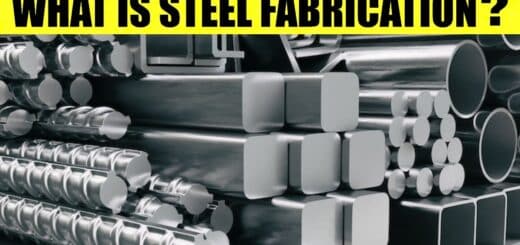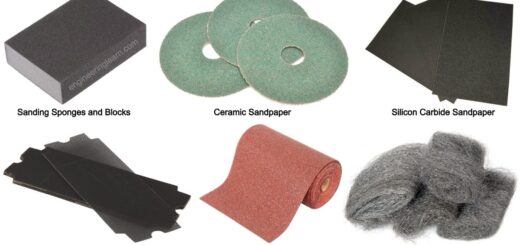Shearing Machine: Definition, Types, Working, Application & Operation [Complete Guide]
![Shearing Machine: Definition, Types, Working, Application & Operation [Complete Guide]](https://engineeringlearn.com/wp-content/uploads/2021/11/Shearing-Machine-1024x539.jpg)
What is Shearing Machine?
Shearing Machine: Definition, Types, Working, Application & Operation [Complete Guide] :- The process of shearing consists cutting of sheet metal, bars, plates by exerting shear stress by the use of a die and a punch which is quite similar to the paper punching action. The die and punch can be of various shapes like straight or circular blades which can be somewhat like scissors. Shearing machines include blanking machines used for producing washers, punching machines used for making small disc etc. Shearing operations is generally done for dividing metals in sheet or strip. The process of shearing of plate, sheet or strip is based on the type of blade used for shearing which can be either rotatory blade or straight blade.
For cutting and squaring flat stock in desired size and shape straight knife shearing are used. Straight knife shearing is basically used for producing rectangular and square shapes and various straight sided shapes can also be obtained from straight knives.
General Description of a Shearing Machine
In the fabrication of metal sheet the first step is cutting the sheet metal in size and this function is performed by shearing machinery and shearing machines. These machines can be used for various purposes in cutting alloys or other sheet metal. Few shearing machines are like scissor in which angular shear action is used for cutting the metal in strips or sheets. In some large machines, straight shear action is used in which blades are fixed in the angle opposite to the angular movement.
Generally the operation of shearing is performed with the help of two blades in which one blade is fixed to the shear bed and the other blade moves in vertical direction with no or little clearance. Shearing operation is done in progressive manner from one side to the other side of the material. In blades the angular configuration is known as rake. Clearance and rake completely depends on the thickness and type of material which is going to be cut.
The upper blades are inclined with respect to the lower blade in case of a press type shears and the inclination is in the range of 0. 5 degree to 2.5 degrees.
Generally the shearing machine have a fixed bed by which one of the blade is mounted, a series of hold down pins and vertical advancing crosshead are used for holding the work piece in place at the time of cutting.
Mechanism of Shearing Machine
The punching or shear cutting actions are the result of close motion of two sharp edges which are closely adjoined and the material placed in between edges. The shear stress is applied at the point of fracture in three phases:
- Deformation: Deformation takes place on both side of the work piece which is next to the cutting edge as soon as the cutting begins near the material.
- Penetration: Cutting edges penetrate or cut the material resulting in fracture lines.
- Fracture: Fracture can be defined as the point at which lower and the upper fracture lines meet. This is the point where work is done but in case of punching, punch is continued till the material move through to clear the slug.
Factors Affecting the Functioning of Shearing Machines
Factors which are considered important in the functioning of shearing machines are:
- Punch force
- Punch speed
- Sheet edge condition
- Die and punch materials
- Punch – die clearance
- Lubrication
Shearing operation can be performed by hydraulic as well as mechanical machines. Sheet metal can be cut and score more accurately and quickly by hydraulic shears. Hydraulic shears are widely used for the factories where more metal fabrication is done. If intense pressure is required then hydraulic shears are a good option. Hydraulic shear do not need huge maintenance and can be operated continuously fast as well as quietly in comparison with mechanical shear. Hydraulic shear are compact and takes less space as compared to mechanical shear when same amount of pressure is being applied.
Types of Shearing Machines
1. Mechanical Shearing Machine
Mechanical shear machine consist of flywheel, motor, worm shaft which is gear driven by flywheel, a ram actuated with the help of driven shaft by connecting links and eccentrics, a clutch which is used for connecting the worm gear drive with driven shaft. In comparison with hydraulic shear, in many operation condition mechanical shear deliver more spm (strokes per minute). Sometime cycle of mechanical shear is around 100 strokes per minute.
In mechanical shear, small motors are also used for the purpose of intermittent shearing due to the energy stored in flywheel.
2. Straight Knife Shearing Machine
In this type of shearing the work piece is placed in between movable upper knife and the stationary lower knife. When upper knife is forced in downward direction then the upper knife cuts metal in two parts. This type of shearing is economical for cutting of straight sided blanks from strip, plate and sheet of thickness less than 50 mm. This process is used for cutting of sheet in blanks which is subsequently drawn or formed.
Machines used for the straight knife shearing are:
Press brakes and punch presses are used when highly efficient equipments are not available. Squaring shears are generally used for cutting and trimming strip, plate or sheet to desired size, these shears are also known as guillotine or re-squaring shears and they are available in various range of designs and sizes.
The strip, sheet or plates are tightly seized by the hold down devices when the upper knife moves down. Position of one knife is adjusted for maintaining clearance in between knives. Actuation of the squaring shear is done hydraulically, mechanically or pneumatically.
3. Pneumatic Shearing Machine
Pneumatic shearing machines are most widely used for the shearing of thin metal which is less thick than 1. 50 mm and short pieces but less long than 1. 5 m. Shear blade beams are moved by the activation of air cylinder for making cut. Free standing air or shop compressed air is used for providing power to the cylinder.
4. Rotary Shearing Machine
Circle shearing or rotary shearing are cutting process of plate and sheet in contours or in straight lines using two revolving and tapered circular cutters. The shearing by rotary shearing machine needs holding fixtures for allowing rotation to the work piece for generating desired circle. In rotary shearing machine, for straight line cut, a straight edge fixture is required which is mounted in throat of machine behind cutter head.
5. Alligator Shearing Machine
Shearing action of alligator shearing machine is similar to that of pair of scissors. The upper knife is held in arm securely and moves around the fulcrum pin and the lower knife is kept stationary. Alligator shearing machines are generally used in shearing bar sections and bar and for scrap preparing.
6. Hydraulic Shearing Machine
The actuation in hydraulic shearing machine is done by motor driven pump which forces the oil in cylinder against piston. The piston movement energizes the ram which is holding upper knife. Hydraulic shearing machines are able to take longer stokes as compared to mechanical shearing machine. They are designed for fixed load capacity.
Working of Hydraulic Shearing Machine
When Work piece is inserted in hydraulic shearing machine it is secured with the use of clamps therefore work piece will not shift under the application of high pressure. For ensuring even and smooth cut for 90 degree cut, a back gauge or a squaring arm is required. Slight burrs are generated from the edge of metal which should be removed from grinding. When hydraulic shearing machine are used then little marks are left due to the holding clamps and cutting blades at the time of working.
Principle Upon which Shearing Machine Works
Shear force for cut are calculated by basic formula:
F = 0.7twUTS
Where,
F = Shear force required
t = Sheet thickness
w = Sheet width
UTS = Material’s ultimate shear strength
The friction between the work piece and the punch increases punch force. With punch force, a force are needed for strip the punch from sheet while return stroke and the second force are opposite in the direction of punch force and this second force are difficult in estimation due to various factors in operation.
Operation of Shearing Machine
Punching is the most common operation of shearing machine in which sheared slug are scrapped. Shearing is also done in between a die and punch. Shearing operation includes punching, piercing, blanking, trimming, notching and nibbling.
1. Blanking or Punching
Blanking or punching is defined as the process in which punch is used for removing a portion of material from strip of sheet metal or from the larger piece. When small piece is being removed then the operation is known as punching and if small removed piece are useful part and the left over are scrap then this operation is known as blanking.
2. Trimming
When parts are produced by drop forging or by die casting, very less amount of extra metal are spread out on parting plane and the extra metal which is known as flash are cut off from the part before it is used, by the trimming operation. Trimming is quite similar to the blanking and the dies used in trimming are also similar to the dies used in blanking.
3. Piercing
Piercing is defined as the process in which a hole is torn in metal. Piercing is different from the punching because in piercing slug do not get generated. Pierced hole are quite similar to the bullet hole in metal sheet.
4. Nibbling
Nibbling is a different variety of notching in which overlapping notches are cut in the metal. Nibbling are resorted for producing any required shape such as collars, flanges .
5. Perforating
It is defined as the operation where various uniform spaced holes are made in the sheet of metal and holes can be of any shape or size and cover complete sheet of metal.
6. Notching
Notching is defined as the operation in which small amount of metal is cut from the blank. Notching is different from the punching operation because in notching the cutting line of slug touches one edge of strip or blank. Notches are made of any shape.
Applications of Shearing Machines
Shearing machines have numberous industrial applications such as pressing, cutting, bending, punching and drawing metal sheets in various dimensions.
Advantages of Shearing Machines
Suitable for straight line cut and do not produce chips.
Disadvantages of Shearing Machines
- Not suitable for hard metals.
- Not suitable for the applications in which clean end finish is needed.













